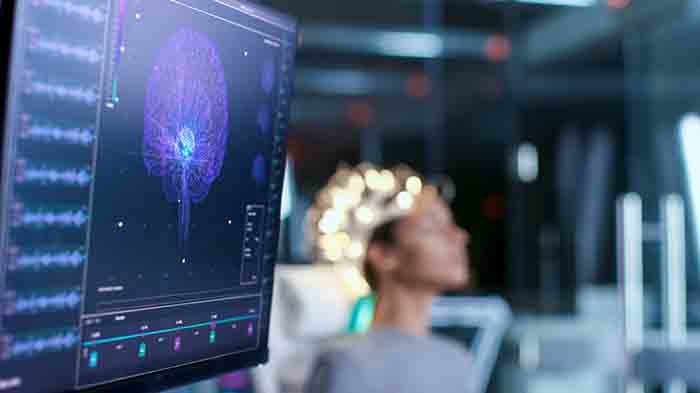In order to get the most effective treatment for your epilepsy and seizures, you need a proper diagnosis. Some physicians will try medications after a thorough examination and family history, or others may want to determine if you are truly having seizures. St. Elizabeth now offers an Epilepsy Monitoring Unit (EMU) at St. Elizabeth Edgewood facility, dedicated to continuously monitor your seizures in a safe environment. The new unit allows advanced diagnosis and treatment for difficult to diagnose seizures or epilepsy.
“Ten percent of the population will have a seizure in their lifetime,” says Dr. Ty Brown, Neurologist with St. Elizabeth Physicians. “Seizures can be difficult to diagnose and treat. The new Epilepsy Monitoring Unit allows our team of specialists to improve the level of care and seizure management options we offer to the people in the region.”
What is a Seizure?
More than 3.5 million people in the U.S. suffer from seizures each year. A seizure happens when an area of your brain receives a burst of abnormal electrical activity that temporarily interrupts normal electrical brain function.
Symptoms of seizures vary, but typically seizures are consistent and predictable for each person. Symptoms may include:
- Abdominal discomfort
- Abnormal sensations such as numbness or tingling
- Changes in muscle tone, muscle twitches or jerking movements
- Convulsions
- Loss of awareness, staring
- Mental confusion
- Speech impairment
- Unsteadiness
- Visual hallucinations
What is Epilepsy?
Epilepsy is a condition involving the brain that makes people likely to having recurrent, unprovoked seizures. It is a common disorder of the nervous system and affects people of all ages, races, and ethnic backgrounds. Almost 2.2 million Americans live with epilepsy.
The type of epileptic seizure you are having depends on which part of the brain is affected and what happens during the seizure. Two categories of epileptic seizures are generalized seizures and partial (focal) seizures.
How do you Monitor Seizure Activity?
In the dedicated Epilepsy Monitoring Unit, you will be in a private room with several ways to monitor your activity. You will have numerous wires placed on your head leading to an electroencephalogram (EEG) machine. This will monitor your brain’s electrical activity. When you have a seizure, these wires will capture where in the brain the seizure started and how it developed.
You will also wear electrocardiogram (EKG) monitoring technology to record the electrical activity of your heart. This allows us to see how a seizure affects your heart rhythm or if the symptoms you are experiencing are coming from a heart rhythm issue. Some patients are misdiagnosed with seizures when they are experiencing symptoms from heart rhythm irregulars, anxiety, or conversion disorder.
How Long Do I Stay on a Epilepsy Monitoring Unit?
The length of your stay at the EMU depends on the time needed to monitor your seizure activity. Although this varies, the average length of stay is usually three days.
Dr. Brown advises, “Spending three days on the monitoring unit can be boring, we recommend that people have visitors, someone to sit with them as well as entertainment such as knitting, books or board games to help fill the time.”
The end goal is to confirm if what you are experiencing are seizures, the type of seizures you may be having. This will allow your doctor to properly diagnose epilepsy and adjust medications to treat the symptoms of epilepsy better and to improve your quality of life.
To learn more about the Epilepsy Monitoring Unit at St. Elizabeth Edgewood, call (859) 301-6098.

